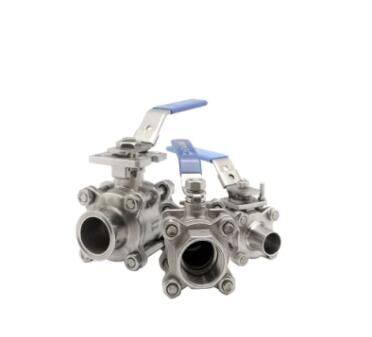How does a ball valve control the flow of fluids
2023-11-03
A ball valve is a type of quarter-turn valve that controls the flow of fluids (liquids or gases) by using a spherical disc, called a "ball," to regulate the passage of the fluid. Ball valves are known for their reliability, quick operation, and ability to provide a tight shut-off. Here's how a ball valve controls the flow of fluids:
1. Basic Design: A typical ball valve consists of a hollow, perforated, and pivoting ball, often made of metal, plastic, or another durable material, within a valve body. The ball has a hole, or bore, through its center, which allows or restricts the flow of fluid.
2. Handle or Actuator: Ball valves are equipped with a handle or an actuator (lever, gear, electric or pneumatic actuator) that can be turned a quarter turn (90 degrees) to control the position of the ball. When the handle is perpendicular to the pipe, the valve is in the closed position, and when it is aligned with the pipe, the valve is in the open position.
3. Flow Control: As the handle is turned, the ball within the valve body rotates. In the fully open position, the hole in the ball aligns with the flow path of the pipe, allowing fluid to pass through the valve. In the fully closed position, the hole in the ball is perpendicular to the flow path, blocking the fluid from passing.
4. Intermediate Positions: Ball valves can also be used to partially control the flow by positioning the handle at any angle between fully open and fully closed. This allows for fine-tuning the flow rate. However, it's important to note that ball valves are primarily designed for on/off applications, and using them to control flow rates may not provide the same level of precision as specialized control valves.
5. Sealing Mechanism: Ball valves have seats or seals around the ball to create a reliable seal when the valve is in the closed position. These seals can be made of materials like PTFE (Teflon) or other elastomers, providing a tight shut-off to prevent leakage.
6. Low Maintenance: Ball valves are relatively low-maintenance compared to other types of valves. The ball's smooth surface and simple design make them less prone to wear and corrosion, making them suitable for a wide range of applications.
Ball valves are commonly used in various industries, including water supply, oil and gas, chemical processing, and more, due to their versatility and ability to quickly and effectively control the flow of fluids. They are well-suited for applications that require a secure shut-off and minimal pressure drop when fully open.



